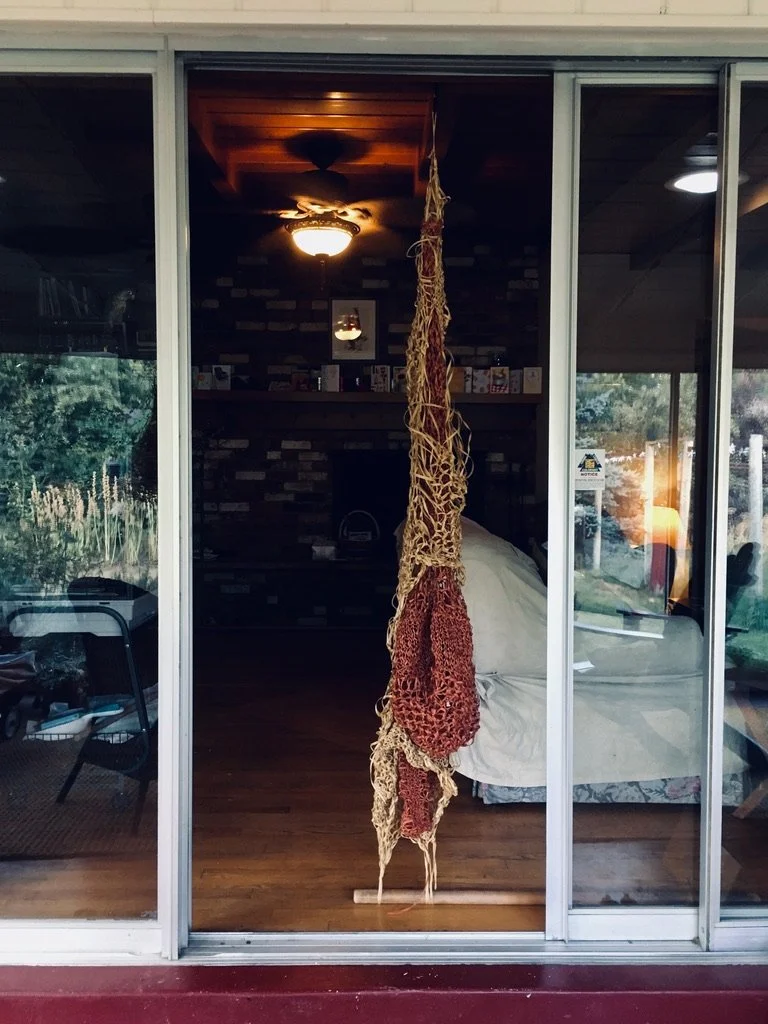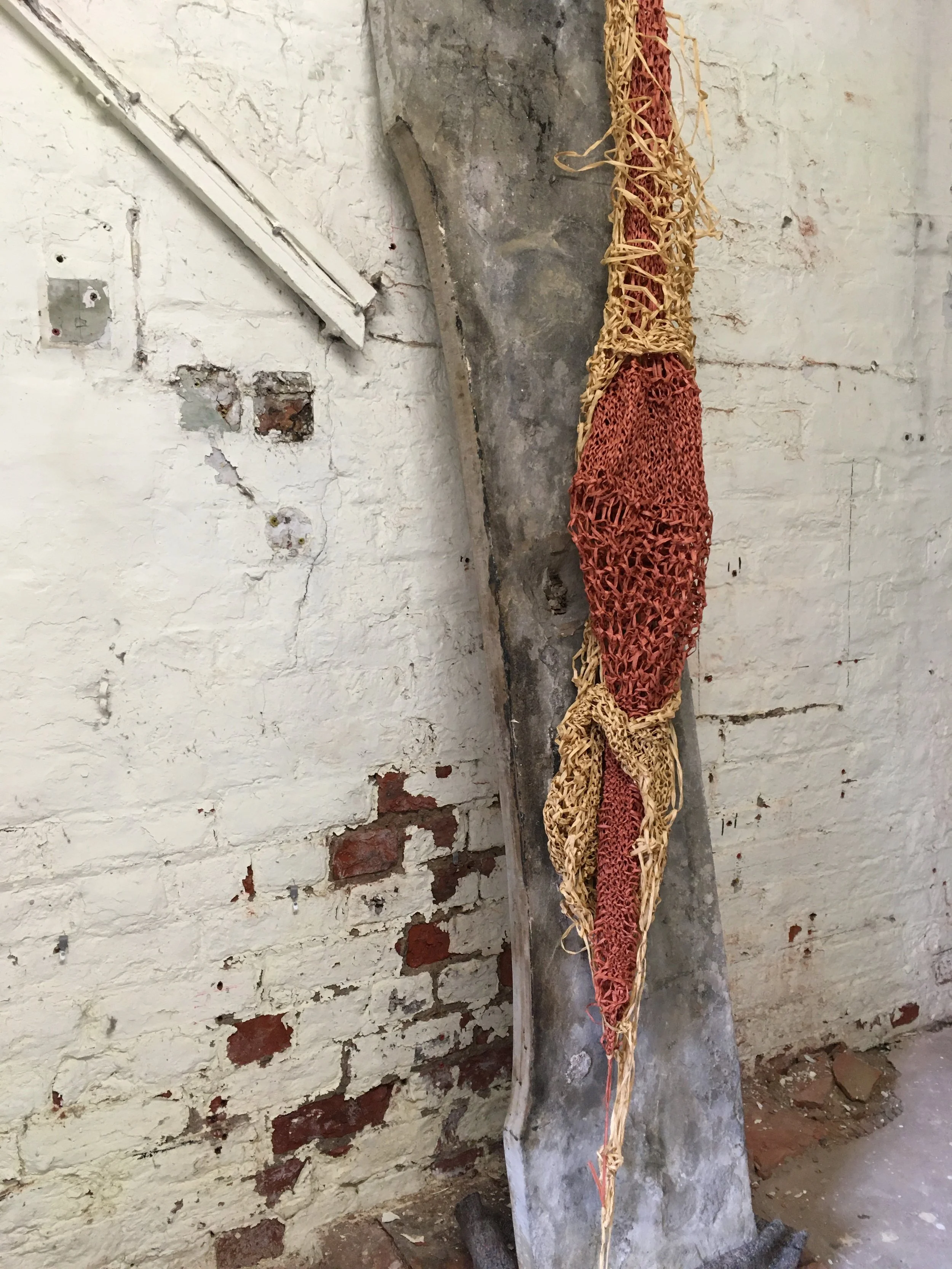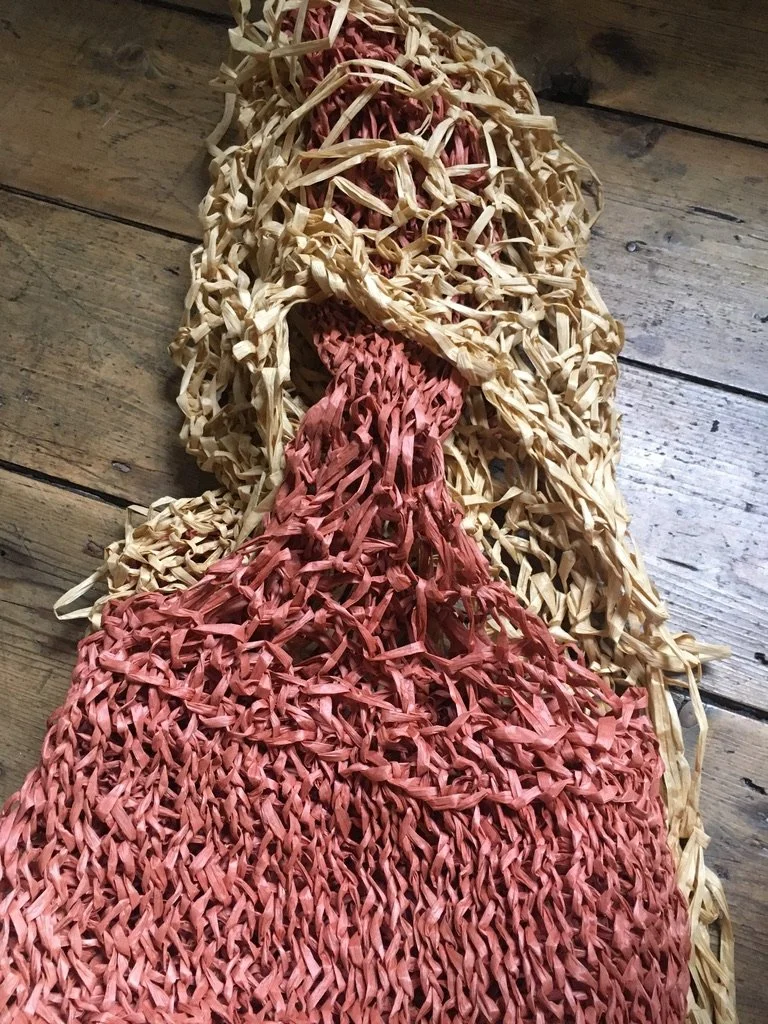Source material - Situated knowledge
Beyond the Void (2019) – Lynda Beckett
On 6th September 2019, at 3:28 pm, I watched my sister take her last breath. In a zombie-like state, in the mi(d)st of a seven-week ordeal, held within a sense of ‘nothingness. The void. An absence of matter... Utter silence. No thing, no thought, no awareness. Complete ontological insensibility’ (Barad, 2012, p. 4); I made 'Beyond the Void' (2019). Fold after fold, the knots started to form. I was curious about the flexibility of the paper and how it allowed a plane of knots to evolve within this work. No one could control the multiplying cells within my sister’s body. They had their agenda.
This encounter with death was the moment within my process that everything seemed to simultaneously un/fold and multiply as a life unravelled around me. Beyond my control, at the point of rupture, nothing seemed to connect psychologically, yet all events were part of the whole. As I made, an assemblage of singularities was forming, a knot into a knotwork, while I was willing my sister to live, a life disappeared before me.
Beyond the Void (2019) – Photographed 2023 – Lynda Beckett
What is this void, this nothingness?
My sister's death left a void. Barad’s essay, ‘Troubling time/s and ecologies of nothingness’ (2017), speaks of the void as ‘the place where the living and dying meet’ (2017, p. 85). I continue to process this void and sense of nothingness. Returning to Deleuze, the point of rupture within a life seems to resonate with Barad’s void. Reading Barad, the sense of void is triggered by place, memories, and objects. Perhaps the void and the point of rupture are the space where the sensual reveals itself. This space feels virtual, a place where ‘the yearning and the imagining of what might yet have been…the infinitely rich ground of imagining possibilities for living and dying otherwise’ (Barad, 2017, p.56) materialise. Psychologically, Beyond the Void (2019) is the yearning for time together, the imagined and the as-yet undiscovered, the new.
In an earlier essay, Barad asks, ‘What is the measure of nothingness?’ and ‘How can we approach it?’(2012), and responds ‘On the face of it, these questions seem vacuous, but there may be more here than meets the eye’ (ibid., p. 5). As I contemplate how to measure nothingness, a subsequent knot appears as the seeing eye and the subjective ’I’. Both are troublesome because this research is not about the first person ‘I’ or what the eye sees. This inquiry is in search of the invisible, the unseen, the sensual that forms the knot.
Beyond the Void (2019), lying on the bathroom floor, 2023 – Lynda Beckett
Beyond the Void (2019), remains a folding of matter that is not immediately visible. The spaces between the knots form a cartography of a life... According to Deleuze, ‘there is no such thing as an empty space, a hole being nothing more than the site of a more subtle matter’ (1991, p. 233). At rest, the sculpture is seemingly lifeless. Under tension, folds and knots create a new topology formed from an encounter. To Simon O'Sullivan’s (2006), Deleuze suggests an encounter is when 'something in the world forces us to think. This something is an object not of recognition but of fundamental encounter' (1994, p. 139). In other words, this mode of (not) knowing privileges the sensual over rational logic.
Beyond the Void (2023) – Lynda Beckett
Situated knowledges
Beyond the Void (2019) was made whilst I was situated within an encounter with death that forced me to reconsider my world. Through Barad (2007) I discovered Donna Haraway's (1988) concept of ‘situated knowledges’. As a methodology, it requires an embodiment with materials, and ebbs and flows between the practical, the sensual and the theoretical. While physically walking with her dogs (1988, p. 583), Haraway thought about seeing through the eyes of the dogs and having an enhanced perception of smell. The alternative perspective moved her thinking away from human centrism and gave her dogs agency within her concept.
Thinking through materials is the source of creating new knowledge within my practice. The process is intra-active between humans and non-humans[1]. Barad states, 'we don't obtain knowledge by standing outside of the world; we know because we are of the world. We are part of the world in its differential becoming' (2007, p. 185). By folding and knotting different materials together, many practical and theoretical processes intra-act, entangle and flow into different scholarly fields.
Haraway’s methodology continues to resonate with Braidotti’s feminist posthuman stance (2022, pp. 213–214) and Barad’s new materialist positioning (2007). The appeal of this methodology on an epistemological level for both theorists is the break from Cartesian dualisms, specifically objectification and hierarchical structures. Furthermore, Barad iterates Haraway's demand to reform scientific establishments; to put a stop to ‘the influence of biased, male, and western-centric modes of operating in the construction of science' (Marçal, 2021, p. 55). And in conjunction with this, Barad and Braidotti challenge the reader to understand the world from within and as part of it, before calling for a mode of activism.
The doing/making might be considered as a 'diffractive methodology...a critical practice for making a difference in the world' (2007, p. 90). This notion aligns with Braidotti's call for activism, which flows through a zoe/geo/techno assemblage within a new feminist posthuman environment.
[1] Barad continues, ‘there is an important sense in which practices of knowing cannot fully be claimed as human practices, not simply because we use nonhuman elements in our practices but because knowing is a matter of part of the world making itself intelligible to another part’ (2007, p. 185).



